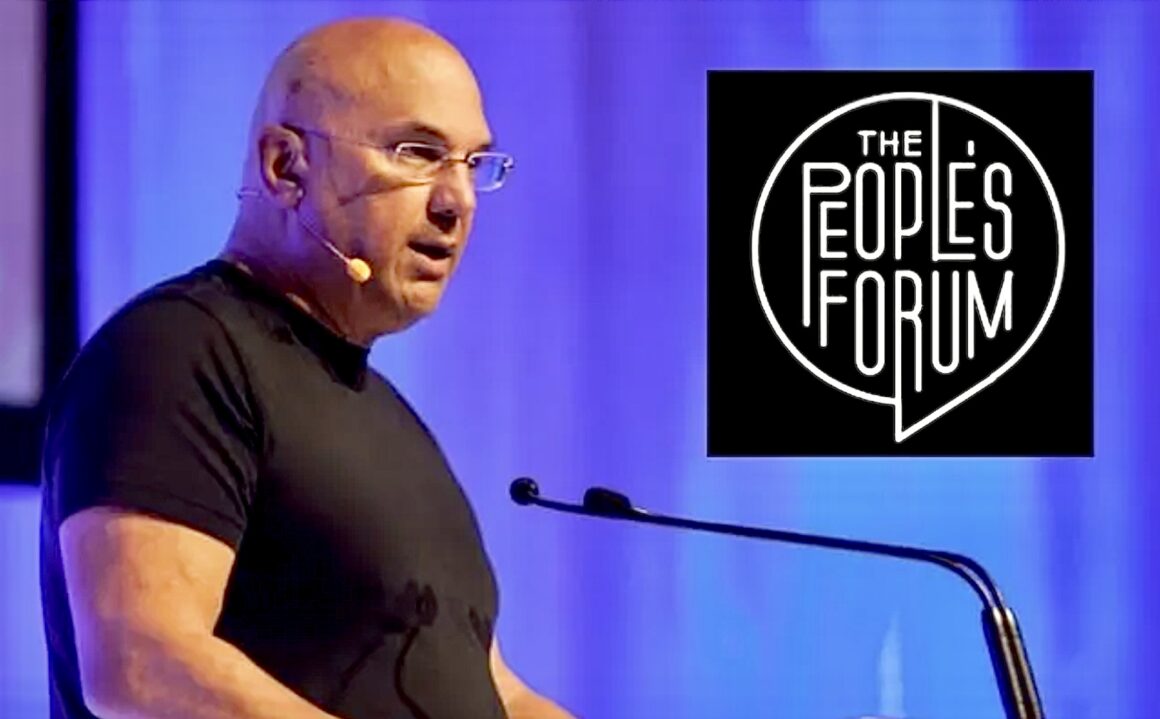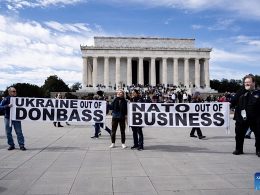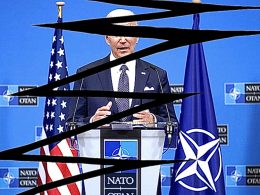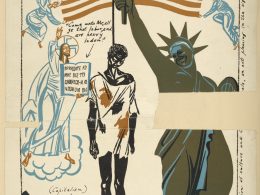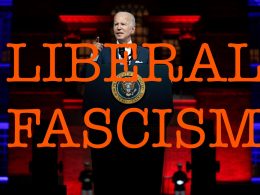Above: Roy Singham
To have a positive role within the anti-imperialist struggle, communists in the United States need to understand two things:
1) that our government continues to use the tactic of backing leftist or “communist” forces which can divide or mislead the global communist movement, and…
2) that the politics being pushed by U.S. millionaire Roy Singham fit the description of such an imperialist destabilization force.
Ever since Carter’s National Security Advisor Zbigniew Brzeziński got Washington to start infiltrating communist formations abroad, as opposed to its old policy of indiscriminately opposing all communist elements, the U.S. empire has been able to gain an unprecedented amount of control over the left. His idea was to use the New Left as a tool for undermining the proletarian struggle, rather than trying to fight it. Since the New Left’s origins were themselves connected to the CIA’s Frankfurt School, this maneuver was easy to carry out. And it let the imperialists find greater unity with the types of socialists who share their key foreign policy goals.
At this moment, imperialism’s biggest goal is to counter China, which Singham and the network of organizations he funds are useful to. They’re so useful precisely because they represent themselves as pro-China, as this gets them support from many more Marxists than would otherwise be the case. It also gets them support from more of the right types of Marxists, as anti-China Marxists are much further from being correct than the ones who support China. That’s the insidious character of the strategy Brzeziński came up with: it leads actors who would otherwise be positive influences on history towards unwittingly aiding the imperialists.
The suspect nature of Singham’s ostensibly pro-socialist activities is obvious on the surface, as Singham is himself a capitalist millionaire. This in itself isn’t necessarily a bad thing, as it’s possible for members of the bourgeoisie to become class traitors. What confirms him to be a class enemy to the workers is that instead of using his resources to genuinely advance the politics of the Communist Party of China, Singham is backing a distinctly American type of “socialism” which isn’t compatible with the CPC. From his home in Shanghai, he’s cultivating a network of NGOs and political parties whose role is to guide the U.S. communist movement—and the Chinese socialist power structure if possible—towards abandoning a genuine fight against U.S. hegemony.
The way they’re trying to do this is by creating a wedge between the PRC and Russia, China’s biggest strategic partner. And among the orgs Singham backs, the most prominent example of this is the Party for Socialism and Liberation. Since the Ukraine conflict escalated two years ago, the PSL has opposed Russia’s operation to rescue the Donbass Russian speakers from ethnic cleansing; taken a stance against multipolarity in response to Russia’s action; attacked the pro-Russian orgs even right after some of them had helped PSL; and worked to separate Russia from Africa. These acts of sabotage against the anti-imperialist movement are symptoms of a deeper ideological poison within today’s communist movement: the type of politics that seek to make “communism” simply mean American leftism with Red aesthetics.
To find the distinction between the authentic communism that the CPC represents, and the Brzeziński-type “communism” that Singham and his beneficiaries promote, look at the ideological basis for PSL’s growing hostility towards Russia. In strategic terms, the reason for PSL’s distancing itself from Russia is that its leadership wants to be able to appeal to as many liberals as possible. The leadership wouldn’t be able to sell this decision to the org’s members, though, without a certain narrative which liberal-aligned U.S. “Marxists” have come to believe about China. This is the narrative that China, as well as the DPRK, are embodiments of American wokeness. That the politics of these countries are essentially the same as the politics of American leftists, and that therefore all their achievements vindicate what these leftists believe.
The problem is that these leftists don’t truly share the predominant beliefs of the CPC. They view social and cultural issues through a narrowly American lens, not grasping how China and many other countries have highly distinct conditions. Conditions which are too different from those of the USA for an Americanized cultural framework to be applicable. In China, gender and sexuality lack the great significance that they have in U.S. culture. Where contradictions exist in China when it relates to these things, they’re not of the same nature as U.S. anti-trans and anti-gay legislation. The imperialists and their NGOs try to make it look like these things are equivalent, but it’s so far proving too hard to export the American culture war onto Chinese society. The separation between the story and the reality is simply too great.
Within the ostensibly pro-China wing of this liberal foreign influence network, the prevailing narrative is not that China’s government is like the Republican Party, but that it’s an essentially ideal end goal for the “left” side of the culture war. The perception is that the PRC and the DPRK are great avatars for wokeness, when the reality is that their societies are mostly detached from the woke vs anti-woke discourse psyop which dominates U.S. politics. China has in recent years come to have its first trans-affirming healthcare clinic, which is a good thing; that doesn’t mean its broader culture is now invested in the pro vs anti-LGBT discourse, though. This change has had to come of China’s own accord, not due to efforts by outside forces to impose their own wishes onto the country. What Singham does is back the types of American leftists who don’t understand China can resolve its own social questions, and think it’s their duty to get involved in other people’s cultural issues.
The outcome of this subtle kind of foreign interference is that through Singham and his NGOs, the anti-Russian element of the U.S. “left” has been able to gain greater access to China. And this element justifies its opposition towards Russia in large part through that ideology of American exceptionalist wokeness. It constructs a narrative where China is seen as the good guy due to its supposedly embodying modern U.S. leftism, while “fascist” Russia is seen as a threat to this alliance between “leftists.”
The mistake (or rather the purposeful distortion) of this ideology is to believe that the most important issue is whether a given country sufficiently fits the criteria for being “leftist.” Left vs right isn’t the framework we should be using, especially not for geopolitics. The primary issue is whether a country is on the side of international monopoly finance capital, which both Russia and China are not. This alone is enough of a reason to support the interests of both, and to refrain from concocting narratives about the two countries supposedly being destined to break up. This is the expectation for the future that the U.S. State Department wants us to embrace, there’s nothing to substantiate it. Russia’s decision to fully defy U.S. imperialism has made it have no choice but to continue strengthening its bond with the PRC, that’s the practical reality. Anybody who says otherwise is promoting an effort to divide and conquer Eurasia.
As much as the imperialism-compatible left tries to use China in its culture war fights, the country’s socialist project isn’t going to be corrupted, like the Soviet Union’s was. The PRC’s leadership is doing all it can to learn from the historical nihilist errors that led to the USSR’s dissolution, and of course the Sino-Soviet split isn’t going to be repeated. The best that these Brzeziński-aligned elements of the left can do is undermine the class struggle in the United States, which claiming to be pro-China better enables them to do.
Because of this, in the last few years we’ve seen an increase in how much of the compatible left says it supports the PRC. What the Singham-aligned actors have done is use China’s Covid success as an argument in support of their pro-lockdown, pro-mandate stance. Which has created many more Marxists who love the PRC, but do so without truly understanding the conditions of China.
How can we tell who’s a reliable friend of China, and who’s using China for their own cynical interests? By seeing whether they act like China is simply an extension of American-style leftism, or they recognize that China is fundamentally different from this. We shouldn’t trust actors who try to bring U.S. culture war battles into other countries. We also shouldn’t trust actors who point to China’s pandemic response as evidence that the USA’s lockdowns and mandates have been worth supporting. China didn’t even have vaccine mandates, and its lockdowns were implemented along with measures to fulfill the people’s needs. The equivalent was not the case for the lockdowns in the USA, which only came along with a check of less than two thousand dollars.
The CPC is not a more woke version of the Democratic Party, as the People’s Forum/PSL ideology essentially portrays it. The CPC is an authentic communist party, which places it in opposition to the anti-Eurasian agenda that these actors are advancing.
————————————————————————
If you appreciate my work, I hope you become a one-time or regular donor to my Patreon account. Like most of us, I’m feeling the economic pressures amid late-stage capitalism, and I need money to keep fighting for a new system that works for all of us. Go to my Patreon here.
To keep this platform effective amid the censorship against dissenting voices, join my Telegram channel.




